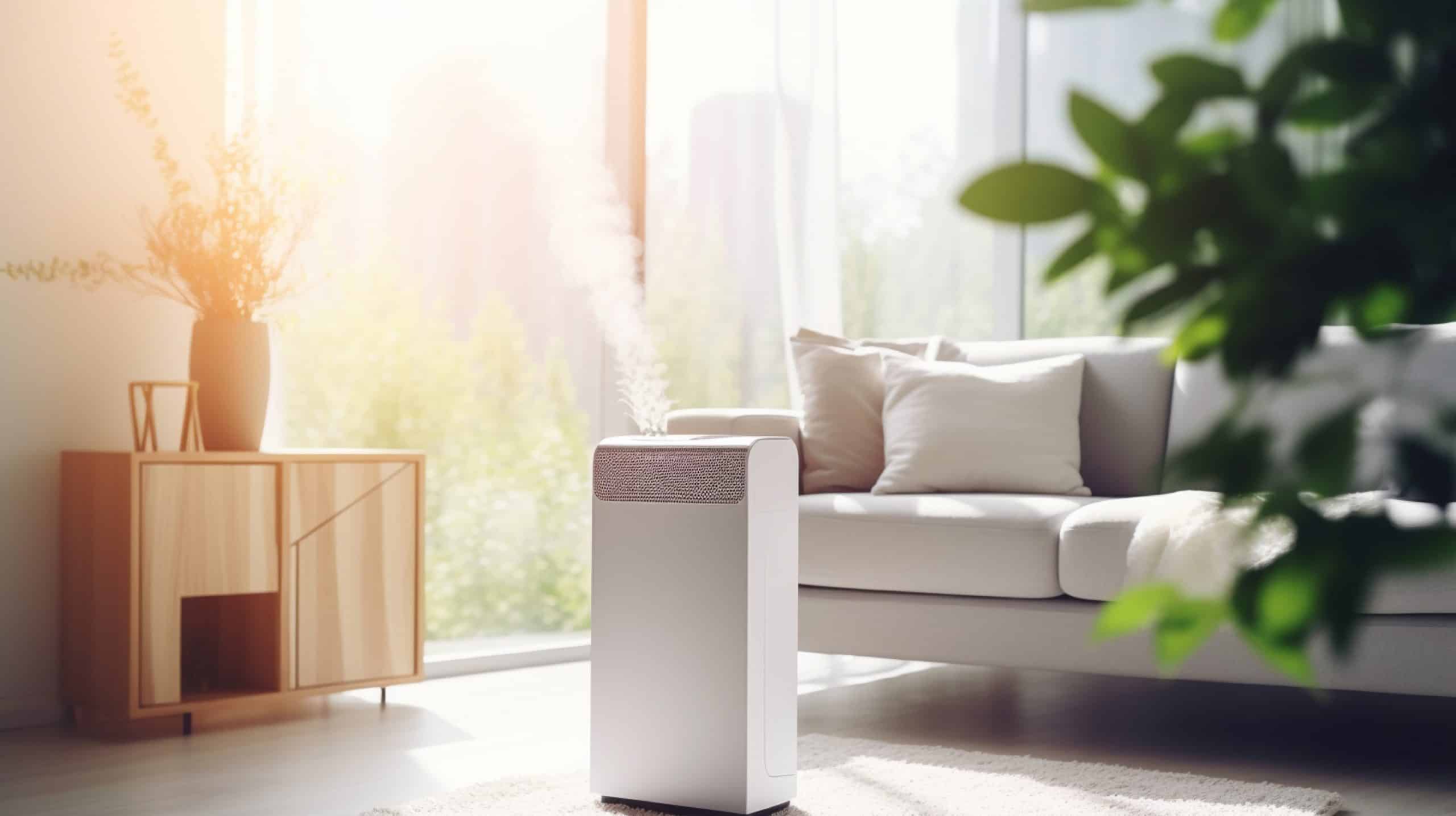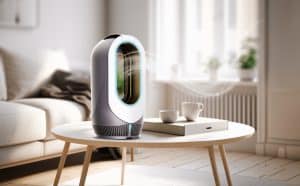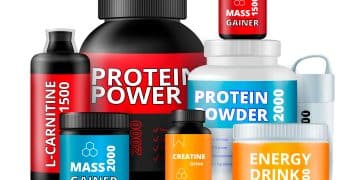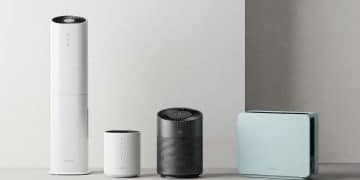Best Air Purifiers on Massive Discounts: Your Complete Summer Shopping Guide

Why Air Purifiers Are Essential This Summer
Rising Air Pollution Levels in Indian Cities During Summer
Air pollution levels in Indian cities continue to rise during the summer months, posing significant health risks. As temperatures increase, so do the amounts of harmful pollutants and particulate matter in the air. These pollutants can trigger respiratory issues, cardiovascular diseases, and weaken the immune system. The burning of agricultural residues, emissions from vehicles, and industrial activities further exacerbate the air quality problem, making it essential to have air purifiers that can effectively cleanse indoor environments.
Increased Allergens and Dust Particles in Summer Months
Summer is also the season when allergens and dust particles become more prevalent. Pollen counts tend to soar, and dry conditions can lead to an uptick in dust and other particulates. For individuals suffering from allergies, asthma, or other respiratory problems, this can mean a significant decline in their quality of life. Air purifiers equipped with advanced filtration systems can efficiently capture these allergens, ensuring cleaner, healthier air inside homes.
Health Benefits of Using Air Purifiers During Peak Pollution Seasons
Utilizing an air purifier can offer numerous health benefits, especially during peak pollution seasons. By filtering out harmful contaminants, air purifiers can:
- Reduce the presence of toxic pollutants such as benzene and formaldehyde, which are linked to cancer.
- Minimize symptoms of asthma and other respiratory conditions by removing irritants from the air.
- Improve sleep quality by creating a cleaner air environment, which can reduce snoring and improve breathing.
- Enhance overall physical health by decreasing the burden on the lungs and cardiovascular system, allowing them to function more efficiently.
Investing in an air purifier this summer is a proactive step towards combating the adverse effects of rising pollution and allergens.

Understanding Air Purifier Technology
Summer in India can be challenging, with high air pollution levels and increased allergens. Air purifiers’ advanced technology helps to combat these issues effectively.
Different Types of Filtration Systems
Air purifiers use various filtration systems to clean indoor air. The most common types are:
- HEPA Filters: High-Efficiency Particulate Air (HEPA) filters trap particles as small as 0.3 microns with 99.97% efficiency. They are excellent for removing dust, pollen, mold, bacteria, and other airborne particles.
- Activated Carbon Filters: These filters are effective in eliminating odors, gases, and volatile organic compounds (VOCs) from the air. They work by adsorbing pollutants onto the surface of the activated carbon.
- UV Filters: Ultraviolet (UV) light filters use UV rays to kill bacteria and viruses. They are usually used in combination with HEPA and activated carbon filters for enhanced purification.
Coverage Area and CADR Ratings Explained
When choosing an air purifier, understanding the coverage area and Clean Air Delivery Rate (CADR) is crucial.
- Coverage Area: This indicates the maximum room size that the air purifier can effectively clean, usually measured in square feet or square meters.
- CADR Ratings: CADR measures the volume of clean air produced per minute, indicating the purifier’s efficiency in removing specific pollutants like dust, pollen, and smoke. Higher CADR ratings mean better performance.
Key Features to Look for in Modern Air Purifiers
Modern air purifiers come with various features that enhance their effectiveness and convenience:
- Air Quality Sensors: These sensors detect air quality levels and adjust the purifier’s settings automatically for optimal performance.
- Multiple Fan Speeds: Having different fan speed options allows you to control the purifier’s airflow and noise levels.
- Silent Mode: This feature ensures that the purifier operates quietly, making it ideal for use during sleep or work.
- Filter Replacement Indicators: These indicators notify you when it’s time to replace the filters, ensuring the purifier operates efficiently.
- Energy Efficiency: Look for models with energy-efficient ratings to save on electricity costs while maintaining high purification standards.
Understanding these technical aspects will help you choose the right air purifier for your needs. By taking into account the different filtration systems, coverage area, CADR ratings, and essential features, you can make a well-informed decision to improve your indoor air quality.
Premium Segment: High-End Air Purifiers
Dyson TP10 Cool Gen1 Review
Dive into luxury with the Dyson TP10 Cool Gen1. Renowned for its blend of style and technology, this air purifier dazzles with its cutting-edge HEPA filtration. It captures 99.97% of particles as small as 0.3 microns, ensuring your home remains a haven. Users admire its sleek design that doubles as a fan, making it a perfect choice for summer months. Current discounts make it an enticing proposition for premium seekers. Besides filtration, its oscillation capability improves air circulation, meaning no corner goes untreated with fresh, clean air.
Coway AirMega 150 Features
The Coway AirMega 150 stands a class apart with its impressive CADR. Designed for those who value air quality, it suits medium to large spaces and comes equipped with HEPA and activated carbon filters. These components perform a double act—trapping tiny particles and reducing odors and VOCs. Coway ensures real-time air monitoring, with intuitive touch controls and a minimalistic design that suits all interiors. Its quiet operation during sleep mode is a notable advantage.
Philips AC1711 Evaluation
Philips, a brand synonymous with innovation, offers the AC1711 air purifier focusing on performance and functionality. It boasts a multi-layer filter system combining pre-filter, HEPA, and activated carbon technologies. Additionally, its auto-mode optimally adjusts fan speed, delivering personalized comfort. The Philips AC1711 shines through its user-friendly interface and smart sensors—elements that significantly enhance user experience. Its energy-efficiency, alongside a manageable maintenance routine, makes it a solid investment for those looking to impose stringent control over indoor air quality.
Transitioning into smart features and connectivity, where air purifiers are evolving into sophisticated devices that seamlessly integrate into modern smart homes, offering unprecedented control and monitoring options.
Mid-Range Options: Best Value for Money
Mi Air Purifier 4 Specifications and Summer Deals
The Mi Air Purifier 4 is an excellent option for those seeking a balance between cost and performance. Its advanced HEPA filter traps 99.97% of particles as small as 0.3 microns, such as dust, pollen, and pet dander. With a high Clean Air Delivery Rate (CADR) of 380 cubic meters per hour, it ensures that the air in your room remains fresh. Noteworthy features include a digital display for real-time air quality monitoring, smart home compatibility via the Mi Home app, and a quiet sleep mode for undisturbed rest. Check out the attractive discounts and bundled offers available this summer to get the best deal.
Sharp FP-F40E-W Performance Review
The Sharp FP-F40E-W air purifier stands out with its unique Plasmacluster Ion technology which neutralizes bacteria, viruses, and mold. It offers a CADR of 240 cubic meters per hour, ideal for medium-sized rooms. The HEPA and activated carbon filter combo ensures the removal of airborne pollutants and unwanted odors. Users praise its low noise levels, energy efficiency, and easy-to-use controls. This model also includes an air quality indicator and a timer function for added convenience. Take advantage of current promotions to bring this reliable unit home at a reduced price.
Honeywell Air Touch V2 Features and Current Offers
The Honeywell Air Touch V2 is popular for its robust performance and user-friendly design. Equipped with a three-stage filtration system, including a pre-filter, HEPA filter, and activated carbon filter, it effectively captures particles and eliminates odors. A CADR of 300 cubic meters per hour makes it suitable for larger living spaces. Key features such as a touch panel interface, filter replacement indicator, and child lock add to its appeal. Don’t miss the ongoing discounts and special summer offers to make this efficient air purifier more affordable.
With multiple mid-range options like the Mi Air Purifier 4, Sharp FP-F40E-W, and Honeywell Air Touch V2, finding a quality air purifier that fits your budget is achievable. Each model brings unique features tailored to different needs and preferences. Take the time to explore these deals and make a well-informed decision for a healthier home environment.
Budget-Friendly Purifiers Under ₹10,000
When it comes to air purifiers under ₹10,000, there are some notable options that do a great job without breaking the bank.
Qubo Q400 Capabilities and Affordability
The Qubo Q400 is a testament to affordability and efficiency. It is equipped with a three-stage filtration system, which includes a pre-filter, activated carbon filter, and HEPA filter. This filtration setup helps in removing dust, pollen, smoke, and other pollutants effectively. With a CADR (Clean Air Delivery Rate) of 200 m³/h, it is suitable for small to medium-sized rooms. The Qubo Q400 also features an easy-to-use touch control panel, making it simple to operate. Its low noise level ensures a quiet operation, making it ideal for bedrooms and living rooms.
Eureka Forbes 150 Performance Review
The Eureka Forbes 150 is another budget-friendly option that does not compromise on performance. It boasts a three-stage filtration process, including an H1-grade HEPA filter that captures up to 99.97% of airborne particles as small as 0.3 microns. With a CADR of 250 m³/h, it is efficient in purifying the air in medium to large-sized rooms. The purifier operates quietly and comes with a convenient filter replacement indicator, ensuring you always maintain optimal air quality. The overall performance, combined with its energy efficiency, makes it a great choice for budget-conscious consumers.
Amazon Basics Air Purifier Value Proposition
The Amazon Basics Air Purifier stands out for its value proposition. It features a four-stage filtration system, including a pre-filter, HEPA filter, activated carbon filter, and a UV-C light for additional protection against bacteria and viruses. With a CADR rating of 230 m³/h, it effectively covers medium-sized rooms. Its intuitive LED display shows real-time air quality levels, and it includes three fan speed settings to adjust based on your needs. The compact design ensures it fits well in any room without taking up too much space. Additionally, it is easy to maintain and comes with affordable filter replacements, completing its value-oriented appeal.
Transitioning to smart features, modern air purifiers offer Wi-Fi connectivity, app control, and smart home integration. Understanding these features helps in making an informed decision about which purifier best fits into your lifestyle.
Smart Features and Connectivity
Wi-Fi Enabled Models and App Control Benefits
Air purifiers have come a long way with the integration of Wi-Fi capabilities, allowing users to control and monitor their devices remotely. With a dedicated smartphone app, users can:
- Adjust Settings Remotely: Change fan speeds, modes, or set timers without being physically present.
- Receive Real-Time Alerts: Get notifications for filter replacements, air quality levels, and maintenance alerts.
- Monitor Air Quality: Access detailed analytics on the current air quality indoors, track historical data, and gain insights for better air management.
Smart Home Integration Capabilities
Modern air purifiers are designed to integrate seamlessly with smart home systems. Compatibility with platforms like Amazon Alexa, Google Assistant, and Apple HomeKit means you can:
- Voice Control: Turn the purifier on or off, adjust settings, and check the air quality status using simple voice commands.
- Automation: Create routines that sync with other smart devices. For example, set the air purifier to switch on automatically when the smart thermostat detects a high temperature or when the smart lock indicates you’ve just arrived home.
- Centralized Management: Manage multiple smart devices from a single app, offering greater convenience and a unified smart home ecosystem.
Real-Time Air Quality Monitoring Features
Monitoring air quality in real time is one of the standout features of advanced air purifiers. These devices are equipped with sensors to:
- Detect Pollutants: Identify the levels of PM2.5, VOCs (Volatile Organic Compounds), and other pollutants in the air.
- Display Results: Show real-time air quality data on LED displays or through the connected app, often using a color-coded system (e.g., green for good, red for poor).
- Optimize Performance: Automatically adjust the purifier’s settings based on the detected air quality to ensure optimal performance and energy efficiency.
Embracing these smart features not only enhances user convenience but also ensures you are breathing cleaner air with minimal effort. Next, let’s delve into the maintenance and running costs to help you make an informed decision about ongoing expenses and upkeep.
Maintenance and Running Costs
Filter Replacement Frequency and Costs
One of the key aspects of maintaining your air purifier lies in the regular replacement of filters. Typically, HEPA filters require replacement every 6 to 12 months, depending on the air quality and usage frequency. Activated carbon filters may need changing in a similar timeframe, while pre-filters often last 3 to 6 months. The cost of filters can vary widely from ₹1,500 to ₹15,000, based on the brand and specific filter type. Ensuring timely filter replacement is crucial for maintaining the efficiency and effectiveness of your air purifier.
Power Consumption Comparison
When it comes to the running costs of air purifiers, power consumption is another critical factor. Modern air purifiers are generally energy efficient, with power ratings ranging from 30 to 100 watts. For instance, if you run a 50-watt air purifier for 12 hours daily, your monthly energy usage would be approximately 18 kWh. With an average electricity rate of ₹7 per kWh, this translates to around ₹126 per month. Comparing these costs can help you choose an air purifier that aligns with your budget while ensuring adequate performance.
Tips for Extending Filter Life
To maximize the lifespan of your air purifier filters, there are several proactive measures you can take:
- Regular Cleaning: Keep the pre-filter clean by vacuuming it every two weeks. This helps in reducing the load on the primary HEPA and carbon filters.
- Proper Placement: Position the air purifier in areas with optimal airflow and away from obstructions.This ensures the purifier efficiently circulates air, reducing strain on the filters.
- Limited Exposure: If possible, minimize the exposure of windows or doors to reduce ingress of external pollutants.
- Routine Maintenance: Follow the manufacturer’s maintenance guidelines, including scheduled inspections and timely cleaning of the unit.
By adhering to these tips, you can extend the life of your filters, ensuring your purifier runs efficiently and cost-effectively.
By considering maintenance requirements and running costs, you can make informed decisions in choosing an air purifier that meets your needs. Balancing these factors ensures not only cleaner air but also a smarter investment for your home.
Making the Right Choice
Room Size vs Purifier Capacity Guidelines
Choosing the right air purifier involves understanding its capability relative to your room size. Manufacturers provide coverage area measurements, typically in square feet, and a Clean Air Delivery Rate (CADR) that indicates how quickly the purifier can cleanse the air. For a room of 200-400 square feet, a purifier with a CADR of 200-300 should suffice. Larger rooms require higher CADR ratings to ensure efficient purification. Always match the room size with the purifier’s coverage for optimal performance.
Budget Considerations and Value Analysis
Balancing budget and features is crucial. High-end air purifiers boast advanced technologies, but mid-range and budget-friendly options offer excellent value with basic functionalities sufficient for smaller spaces. Assess your needs and align them with features you can’t compromise on, such as filtration efficiency and CADR rating, without overspending. Comparison shopping during sales can lead to great deals without compromising on air quality.
Warranty and After-Sales Service Comparison
Checking warranties and after-sales service can save future headaches. Reputable brands typically offer 1-3 years of warranty, covering parts and maintenance. Look for companies with strong customer support and service centers nearby, ensuring you receive help if or when issues arise. A reliable warranty and support system add peace of mind to your purchase.
Ensuring you choose the right air purifier boils down to understanding your space needs, sticking to your budget, and focusing on after-sales support, all vital for maximizing your investment in cleaner air.
Common Questions Answered
Installation and Placement Best Practices
Getting the most out of your air purifier starts with proper installation and placement. Here’s what you need to keep in mind:
- Central Location: Position your air purifier centrally within the room. This assists with maximum air circulation and ensures the purifier covers the entire room effectively.
- Avoid Corners and Walls: Keep the purifier at least 3-4 feet away from walls and corners. Placing it too close to walls can obstruct airflow, reducing its efficiency.
- Height Matters: Ideally, place the air purifier on a raised surface like a table or stand. Elevation helps in optimal distribution of clean air.
- Clearance Above and Around: Ensure there’s adequate clearance around and above the air purifier to promote unobstructed air intake and output.
Ideal Running Hours During Summer
Summer months, with increased pollution and allergens, necessitate more frequent use of your air purifier. Here’s a guideline:
- Continuous Operation: Running the air purifier continuously can keep indoor air quality at its best. Use ‘Auto Mode’ if your unit has it; this allows the device to automatically adjust settings based on detected air quality.
- Peak Usage Times: Be particularly mindful during peak pollution times, which are early morning and evening. Running the purifier at full function during these periods is particularly beneficial.
- Night Time Use: Utilize ‘Sleep Mode’ during night hours. It maintains air purification without the noise, ensuring better sleep quality.
Troubleshooting Common Issues
Even the best air purifiers can encounter issues. Here are some common problems and their solutions:
- Reduced Airflow: A common concern if the purifier is not working efficiently. Check and clean or replace filters if clogged. Ensure no obstructions around the air intakes and outlets.
- Unusual Noises: If your purifier starts making abnormal sounds, it might be due to an unbalanced fan or a foreign item stuck inside. Cleaning the fan and interior components can resolve this.
- No Power: Check if the air purifier is properly plugged in and the socket is working. Try resetting the device or consult the user manual for fuse replacement instructions.
- Filter Reset Indicator Not Working: If the filter reset indicator remains on after changing the filter, you may need to manually reset the filter indicator. Refer to the manual for the correct reset procedure.
Proper maintenance and troubleshooting can help ensure your air purifier runs smoothly all summer long. Ensure you follow the user manual guidelines for specific care instructions.






